Definition and Characteristics of Hemichordata
The Hemichordata is a phylum of worm like invertebrate animals that are found in the ocean. They are named for the buccal diverticulum which is a structure that looks like a notochord, thus it was thought that they were half-chordates.
This is now known to be false, with the Hemichordata evolutionarily more closely related to the Echinoderms than the Chordates.
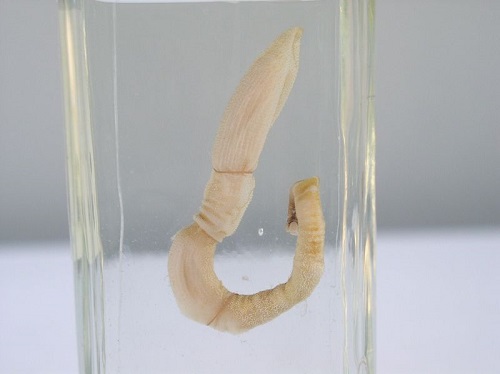
The body is made up of three main parts:
a proboscis
a collar
and a trunk.
The nervous system is not centralized, it is found in the collar where it forms a neurocord that extends to the epidermis where it radiates to form a net-like structure.
In some hemichordates, there may be tentacles that extend from the collar. These are used by the animal to filter feed.They have a primitive circulatory system that consists of a contractile vesicle that functions as a primitive heart, as well as blood vessels and sinuses.
There are occasionally gill slits found in the pharyngeal region, but this is not a feature that is found in all hemichordates. The genus Rhabdopleura for instance has no gill slits.
There are both solitary and colonial individuals.
- One of the groups with solitary individuals is the acorn worms in the Class Enteropneusta which live among the stones or live in burrows in the mud.
- The second group of hemichordates, the pterobranchs (Class Pterobranchia) also lives in the ocean in tubes that they secrete. Individuals are able to connect to other members of the colony by stalks.
The Pterobranchia are also filter feeders. The tube is secreted by the proboscis. Unlike the acorn worms, the pterobranchs have a short trunk, and are not worm-like. They do have arms covered in tentacles.
- The third group of hemichordates consists of only a few individuals in the Class
Hemichordates are filter feeders that feed on small particles and rely on ciliated surfaces. Feeding mode is thus very limited in the hemichordates.
Definition and Characteristics of Chordata
All animals in the Phylum Chordata, at some stage of development have a notochord. This is a dorsal rod made of flexible material that is formed from mesodermal cells during development.
The notochord is the defining characteristic of the Chordata phylum of animals. In primitive chordates, the Urochordates, the notochord functions as a hydrostatic skeleton.
Chordates have a dorsal nerve cord, that is hollow, and gill slits in the region of the pharynx at some stage during development. Chordates have a more advanced centralized nervous system compared with Hemichordates.
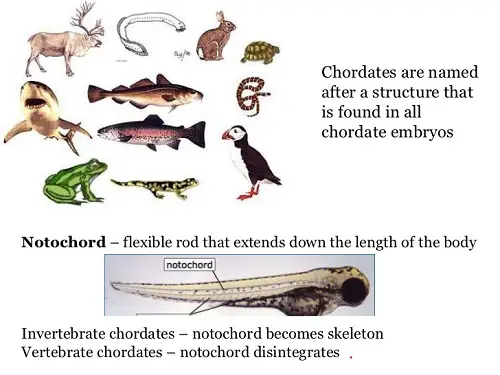
A further distinctive feature of all chordate animals is the presence of a postanal tail at some stage during development.
The lower chordates, cephalochordates and urochordates, have an endostyle which is a structure that assists with filter feeding by secreting mucus which traps food particles.
Chordates are considered the most evolutionarily advanced of all the animals, and include the vertebrate animals. The notochord is replaced by the vertebral column during development in the vertebrates.
Chordates include the following subphyla:
- Subphylum Urochordata, these are tunicates or sea squirts that live in the ocean.
- Subphylum Cephalochordata includes amphioxus which is a fish-shaped chordate.
- Subphylum Vertebrata, which include the vertebrates: fish, amphibians, reptiles, birds and mammals.
Some of the diagnostic features of a chordate may only be present at the embryo stage in the more evolutionarily advanced chordates, such as the reptiles, birds and mammals.
Some chordates were able to colonize land and air, for instance the reptiles and birds.
Chordates are found in all habitats from land to sea and are extremely diverse with numerous species having a wide variety of adaptations.
Difference between Hemichordata and Chordata
- Chordates all have a notochord at some stage of development, while hemichordates do not have a notochord.
- Hemichordates all have a buccal diverticulum, while chordates don’t have a buccal diverticulum.
- Chordates possess a postanal tail, while hemichordates do not have a tail, only a trunk.
- Chordates all possess gill slits in the pharynx at some stage of development, while hemichordates do not all possess gill slits in the pharynx.
- Chordates have a centralized nervous system, while hemichordates have a neural net.
- Hemichordates have a limited feeding mode involving cilia. Chordates have a very diverse range of feeding modes including using cilia, but also actively hunting for prey.
- Hemichordates are detritivores or suspension feeders, while chordates can be these and herbivores, omnivores and carnivores.
- Chordates occur in all habitats while hemichordates are limited to the marine environment.
- Chordates include the vertebrate animals, while hemichordates do not include any vertebrate animals.
- Hemichordates are considered to be primitive in evolutionary terms, while chordates are considered advanced.
- Hemichordates include only three classes while chordates include several classes of animals and are far more diverse.
Table comparing Hemichordata vs Chordata
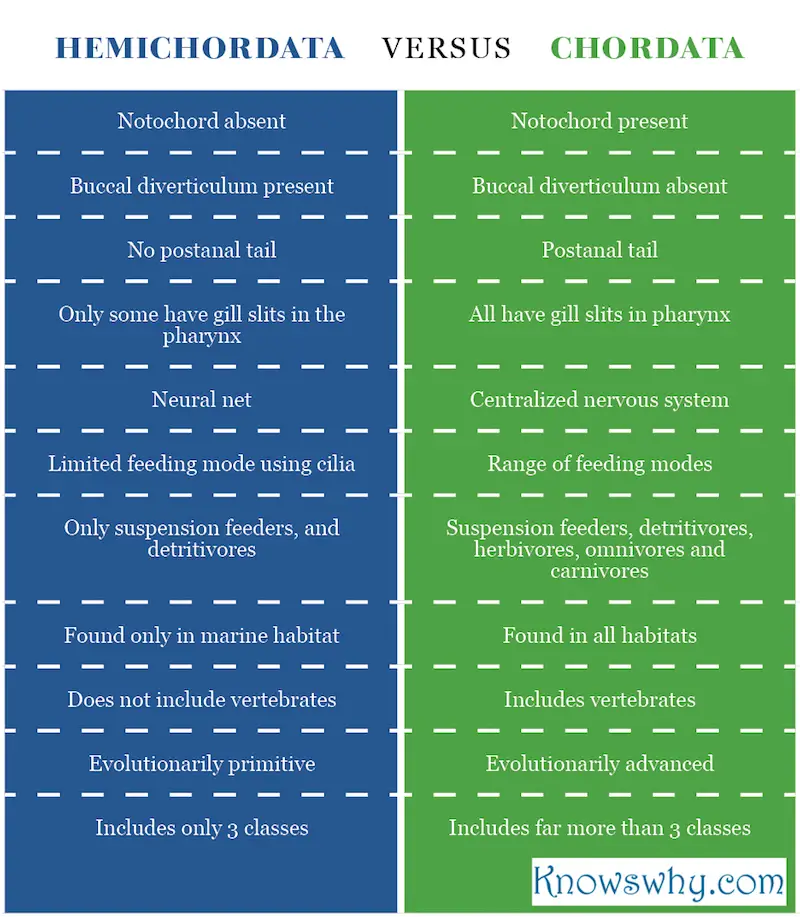
Here are few cruical points on the Hemichordata and Chordata
- Hemichordates used to be thought more closely related to chordates than they are. They are more closely related to Echinoderms.
- Hemichordates have a buccal diverticulum, proboscis, collar and trunk.
- Chordates have a notochord, which is a hollow, dorsal cord, derived from mesoderm.
- Chordates all have pharyngeal gill slits and a postanal tail at some stage of development, in some cases only in the embryo stage.
- Chordates include the vertebrates and more classes of animals than occur in the hemichordates.
- Hemichordates often have tentacles and are filter feeders found living in the marine environment.
- Chordates include a very diverse group of animals having a range of feeding modes and living in every habitat on earth.
Author: Dr. Rae Osborn
Dr. Rae Osborn holds Honours Bachelor of Science degrees in Zoology and Entomology, and Masters of Science in Entomology from the University of Natal in South Africa. She has received a PhD in Quantitative Biology from the University of Texas at Arlington. She was a tenured Associate Professor of Biology at Northwestern State University in Louisiana for 10 years. She also completed an AAS Degree in Information Network Specialist and an AAS in Computer Information Systems, at Bossier Parish Community College in Louisiana.

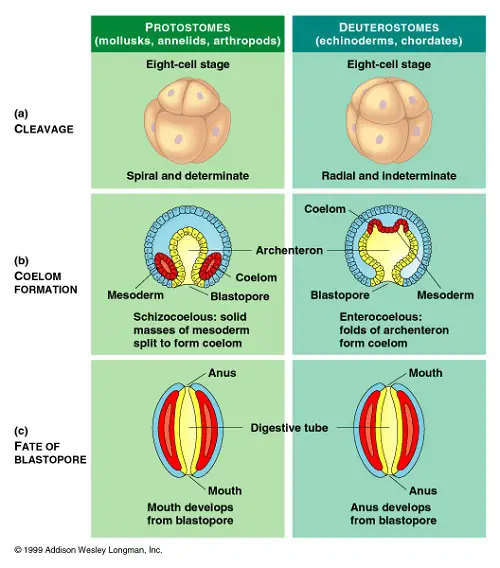
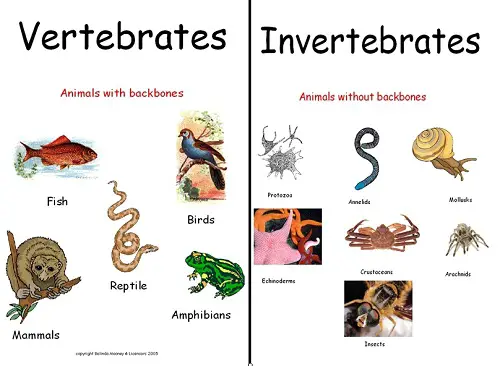
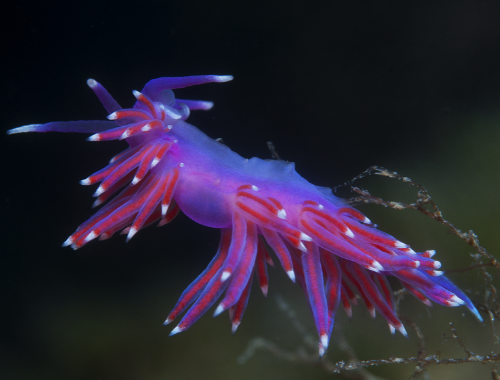
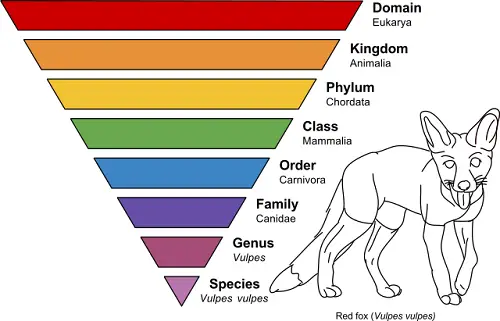

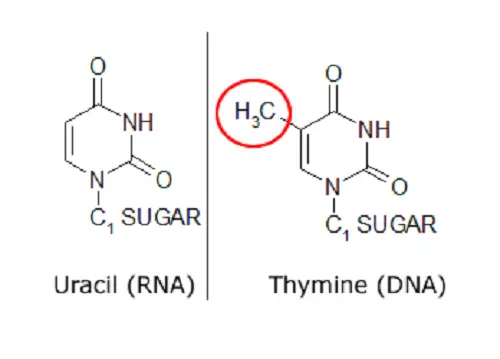





Leave a Reply